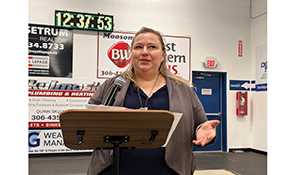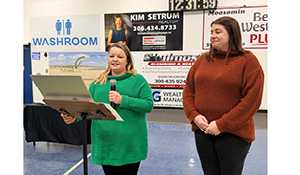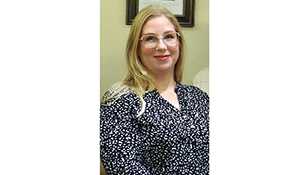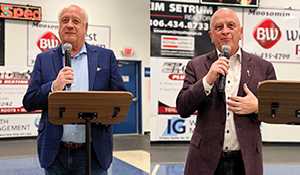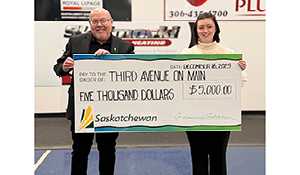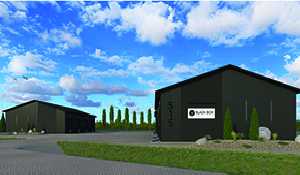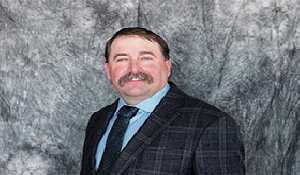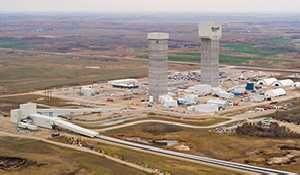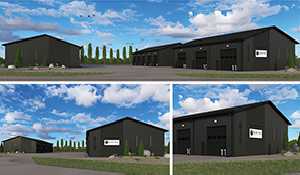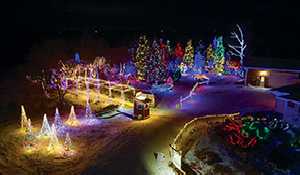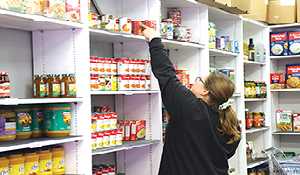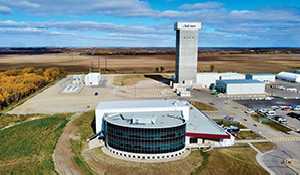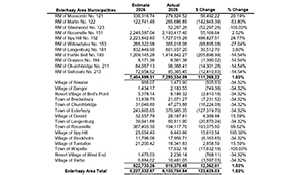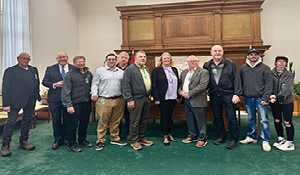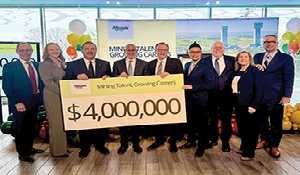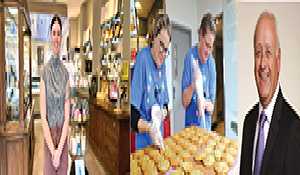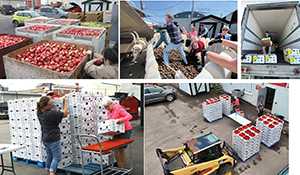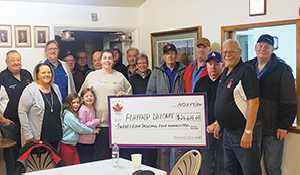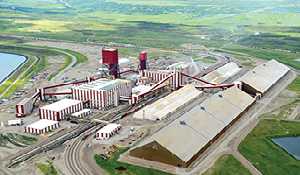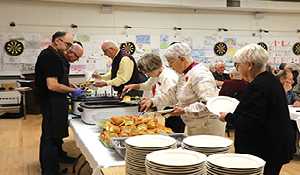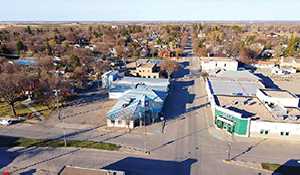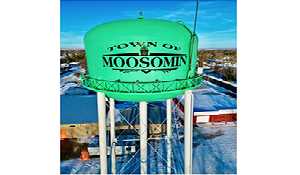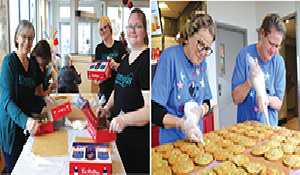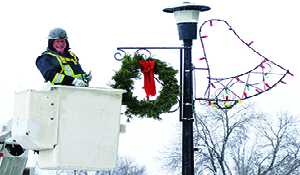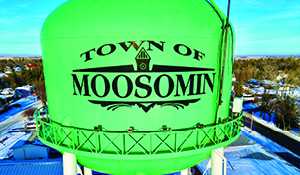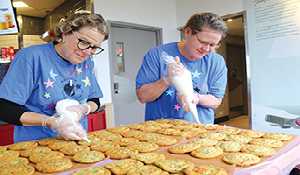Grade 4 students learn about provincial election
Moosomin Grade 4 mock vote results: Sask Party 21 votes, NDP 1 vote, SUP 1 vote
November 4, 2024, 12:35 pm
Ashley Bochek
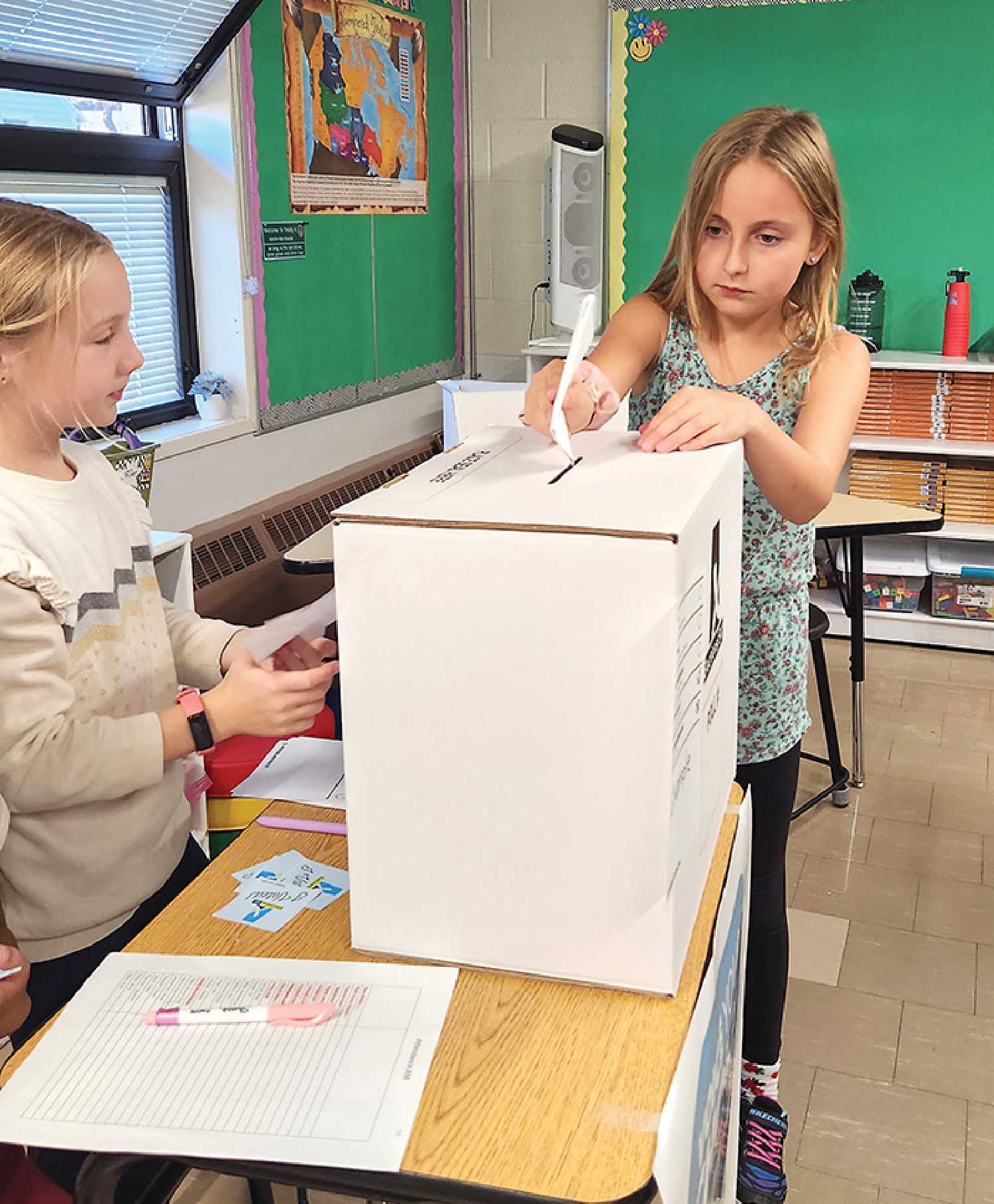

The MacLeod Elementary Grade 4 class participated in a provincial student vote last Monday. Grade 4 teacher Karly Fregin says the student vote was a great learning experience to add to their curriculum on the provincial government.
The student vote locally yielded results similar to the actual election—but a bit more one-sided. Kevin Weedmark and the Saskatchewan Party won in the student vote among Grade 4 students, but with an even larger margin than in the actual election, and the Saskatchewan Party won the student vote count across the Moosomin-Montmartre riding, where eight schools and more than 550 schools participated.
“It is a program done by Civix Canada and they do them for provincial and federal elections,” Fregin said. “I did it during the last federal election which was the last time I taught Grade 4 and we thought it was amazing program to do, and it fits very well with our Grade 4 social studies. We have a unit that focuses on government—understanding the responsibilities of the provincial government, looking at rights and responsibilities citizens have in a province, and we talked a lot about when you vote you have the right to vote, but it is our responsibility to learn about the candidates and what we think is important and to make that decision.
“In our curriculum, we also talk about describing ways people can be involved in the democratic process—understanding that we all have a voice and it is okay to have different opinions, that is going to happen, but to be respectful of everyone’s opinions and what one person might think is important someone else may think is not. It led to amazing conversations in our classroom. We also went through all of the platforms of the parties ahead of time and I had the students write notes about what they liked to help them make an informed decision.”
She said the program provides everything teachers need.
“We just got in touch with the program, and they sent everything we needed, all the information you need to know about the candidates in your area, the ballot boxes, the ballots that look very official, and then on Monday by 4 pm we had to upload all of our votes. It all went to their database, and they sent us the results on Tuesday morning.”
Civix let Fregin know her Grade 4 class results as well as the overall results from all the participating Saskatchewan schools.
“In our Grade 4 class, we had 21 Saskatchewan Party votes, one NDP vote, one Saskatchewan United Party and four spoiled ballots.
“There were more than 38,000 votes reported from 348 schools across Saskatchewan, with results from all 61 constituencies. The overall vote for all the schools that participated was, students elected a narrow NDP majority government, and the Saskatchewan Party formed the official opposition, with 39.2% voting NDP, 37.4% voting Saskatchewan Party, 8.4% voting Saskatchewan United Party, and 10.5% voting for the Green Party.”
Fregin explains she also used Civix during the last federal election and really enjoyed the program and interactive process.
“The last federal election there was a poster put up in our staff room and we thought it would be a great fit for our curriculum, but also for students to understand the importance of voting and that is how you make your voice heard. It brings that learning in a more fun and interactive way because sometimes sitting and learning about government in the classroom is not the most exciting thing, so just making it more hands-on experiential for them.”
The Grade 4 social studies curriculum includes information about the provincial government and how it works with other levels of government.
“I taught Grade 2 last year and we focused on community and municipal, so we learn about what it means to be urban and rural, what a municipal government does, who is in charge, all the things they do, and our social studies builds on itself as we get older, so in Grade 4 we learn about the provincial side of things,” Fregin said.
“It leads into one of our curriculums based on Saskatchewan history, so we are looking at provincial government, outcomes on traditional forms of government, and Métis forms of government, so we are learning all the different ones. It is very tailored to our province, so having that provincial election was a good opportunity to talk about what is important, what does our province need, and what would you guys like to see, and we actually did that activity in the newspaper from last week that has all the questions about if you wanted to be premier, what would you do first and what is good advice for a leader.”
Fregin says she enjoyed the student vote as did her students.
“Understanding that we are very lucky to live in a place where we all have the right to vote and we talked about other places where they can’t vote and how long it took certain demographics of people to be able to vote, so we have talked about that and just getting them to understand they have a voice, this is the proper way to do things, these are the steps, and why sometimes things take a little longer than we think they are going to. We can’t fix everything right now, it takes time and there are steps to go through, and just understanding how it all works and getting them more actively involved and asking more questions, and understanding because we talked about campaign signs and what they mean, and why they do that. We really enjoyed participating in the vote, it was a great learning experience for my students.”
